How To Unclog a Garbage Disposal in 6 Quick Steps

|
Required Time |
Skill Complexity |
Cost |
|
Less than 30 minutes |
Easy |
Free with basic tools |
A clogged garbage disposal can turn everyday life into a chore, complicating dinner plans, making cleanup a more time-intensive task, and filling your kitchen with bad smells.
That’s why knowing how to unclog a garbage disposal (also known as a garburator) is an essential skill that requires only basic DIY knowledge.
Learn seven key steps to unclogging a garbage disposal, what you should know before getting started, and signs it’s time to enlist expert help.
Table of Contents:
- What To Know Before Unclogging a Garbage Disposal
- What Causes Garbage Disposal Clogs?
- 6 Ways to Unclog A Garbage Disposal
- 1. Reset the Disposal
- 2. Disconnect the Power
- 3. Drain Any Water
- 4. Remove Waste With Tongs or Pliers
- 5. Turn the Disposal Impellers
- 6. Check the Fittings
- Schedule Garbage Disposal Maintenance With Your Local Mr. Appliance®
- Garbage Disposal Unclogging FAQ
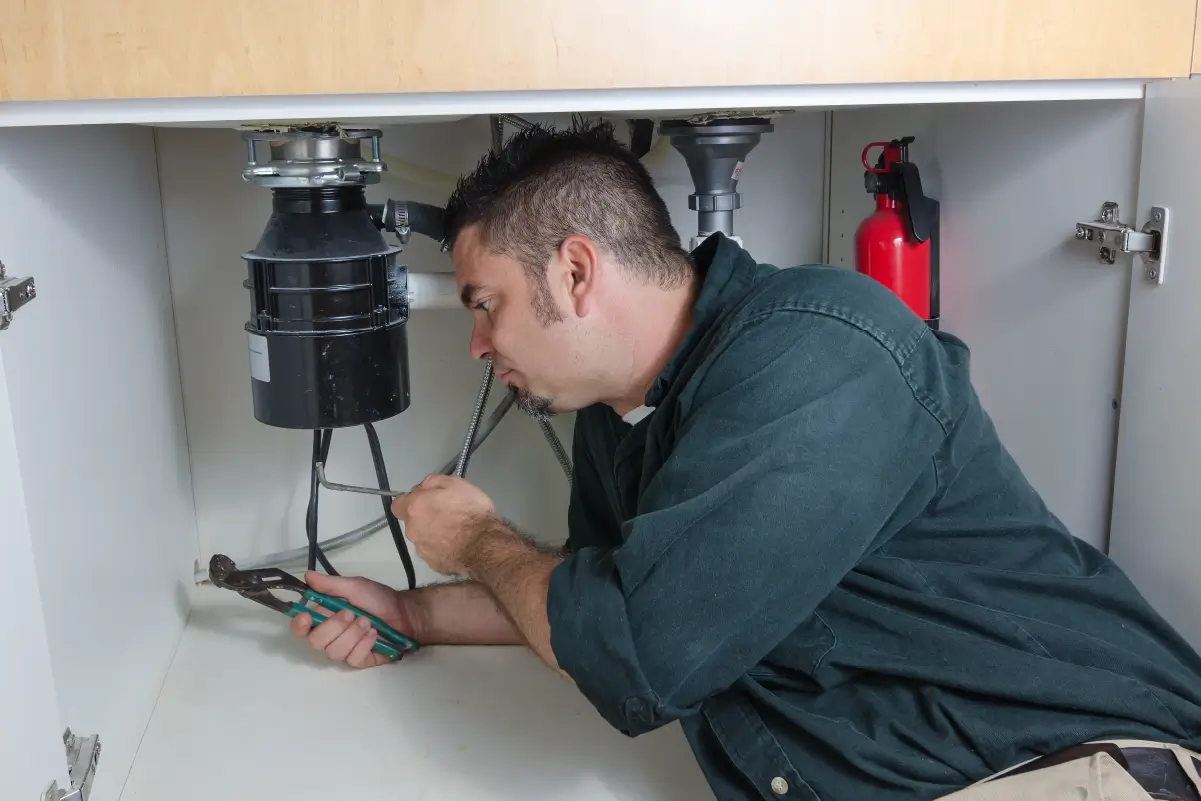
What To Know Before Unclogging a Garbage Disposal
Before you attempt to unclog your garbage disposal, it’s important to understand that these can be dangerous appliances when used improperly. Regardless of the method you use to unclog, always disconnect the power supply to the garbage disposal before starting. You should also wear proper safety gear, such as gloves and goggles.
In addition to safety precautions, you need to have the right tools and supplies, including:
- Scrub brush
- Flashlight
- Tongs
- Allen wrench
- Paper towels
- Rags
Due to the potential risks and dangers of appliance repair, if you do not have the proper tools or training –– or whenever you’re in doubt –– always contact a professional appliance repair service for help.
What Causes Garbage Disposal Clogs?
A garbage disposal converts food scraps into liquid waste using water and mechanics. Knowing what to avoid when operating your garbage disposal can help prevent a clog from forming in the first place.
1. Inserting the Wrong Food
Not everything should go into a garbage disposal. Ground items such as eggshells or coffee grounds become tiny grains that can adhere to any existing sludge and cause a clog. Additionally, banana peels, celery, artichokes, and other fibrous foods entangle with different materials and catch on the impellers.
To avoid a clogged garbage disposal, these foods should never be placed into a garbage disposal:
- Bones
- Olive pits
- Corn cobs
- Grease/Oil
- Pasta
- Rice
- Non-food items
Prevention Tip: Do you need a space-saving disposal method for non-food items? Consider using a trash compactor to fit more garbage into a single bag.
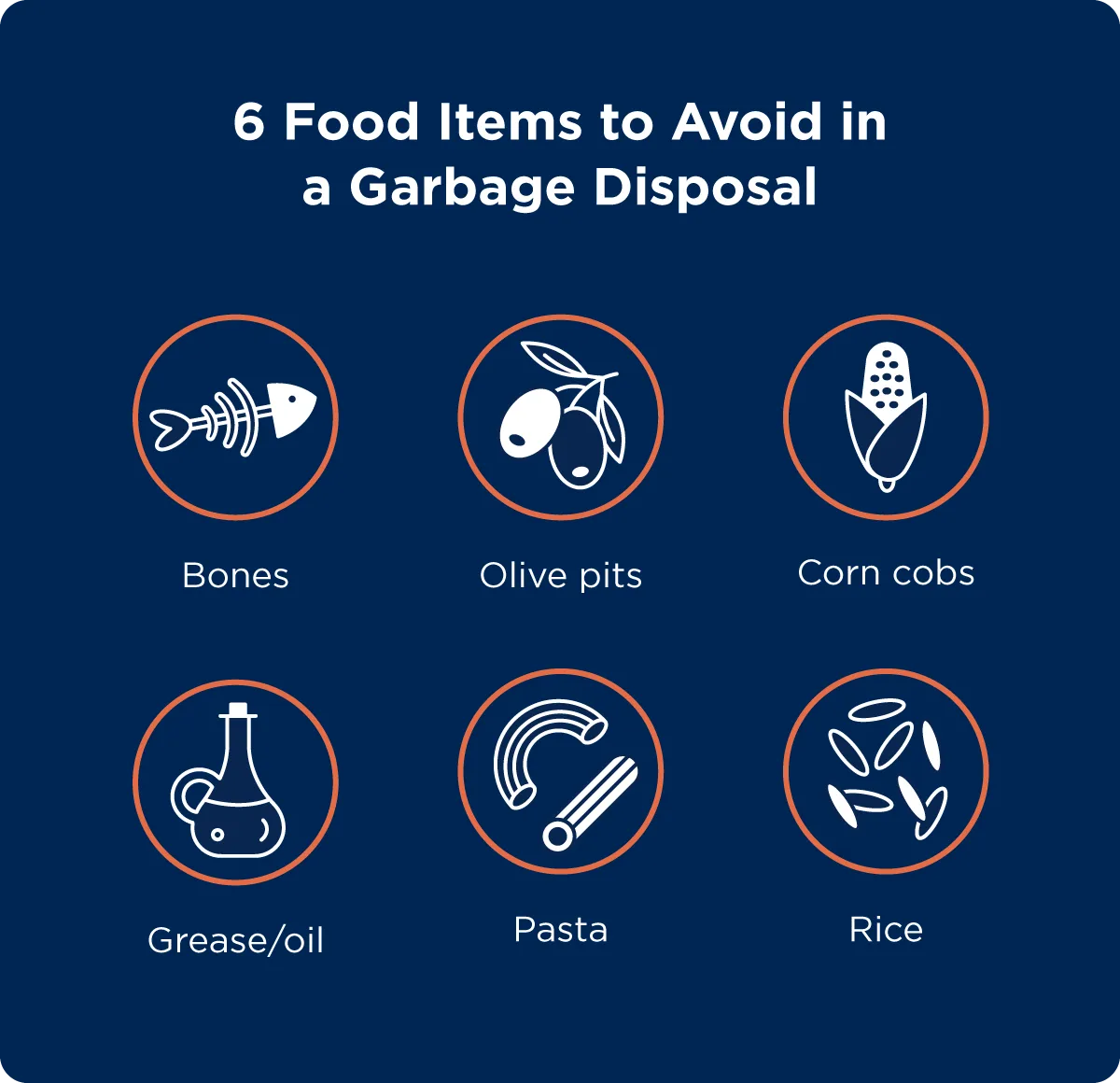
2. Feeding the Disposal Too Quickly
It may be tempting to quickly feed your garbage disposal, but this may cause a clog. Cut up more oversized items into bite-sized pieces and feed them gradually into your disposal — never attempt to jam or pack your disposal with food.
Patience is the key; don’t rush the process and give the disposal time to process inserted foods. This allows the disposal to adequately break down and dispose of small quantities of food before adding more.
3. Not Using Enough Water
Once the garbage disposal finely grinds the food waste, it requires an adequate water supply to continue flowing through the drainage system. Lack of water can cause these materials to build up sufficiently to clog the disposal and prevent water from penetrating. Keep the water running for at least 30 seconds after you’re done grinding.
Prevention Tip: Always turn off the garbage disposal before turning off your sink’s water supply.
4. Using Hot Water
You should only use cold water when using your garbage disposal. Hot or warm water can cause fats and grease to liquefy, sticking to your drain. Cold water will keep your food solid as it moves down your drain.
Prevention Tip: If you have to pour hot or boiling water down the drain, make sure to wait before using the garbage disposal. Turn on the garbage disposal only once you’re sure cold water is draining in the sink.
6 Ways to Unclog A Garbage Disposal
Unclogging a garbage disposal can be as simple as resetting the device or more complex—freeing jammed impeller blades. Here are some of the common methods to unclog a garbage disposal.
Note: Before attempting any troubleshooting steps, make sure you unplug the disposal from the power source.
1. Reset the Disposal
Garbage disposals that aren’t working may need to be reset. When a garbage disposal encounters a jam or overheats, it may trip a safety switch, which you’ll need to reset before using the appliance again.
The reset button is likely at the bottom of the disposal or on the base — check your garbage disposal's official user manual to help locate it. Once you’ve located the button, press it and turn on the power to see if it begins to work again.
When it comes to knowing how to unclog a garbage disposal without taking it apart, the reset method is a quick option that requires minimal effort.
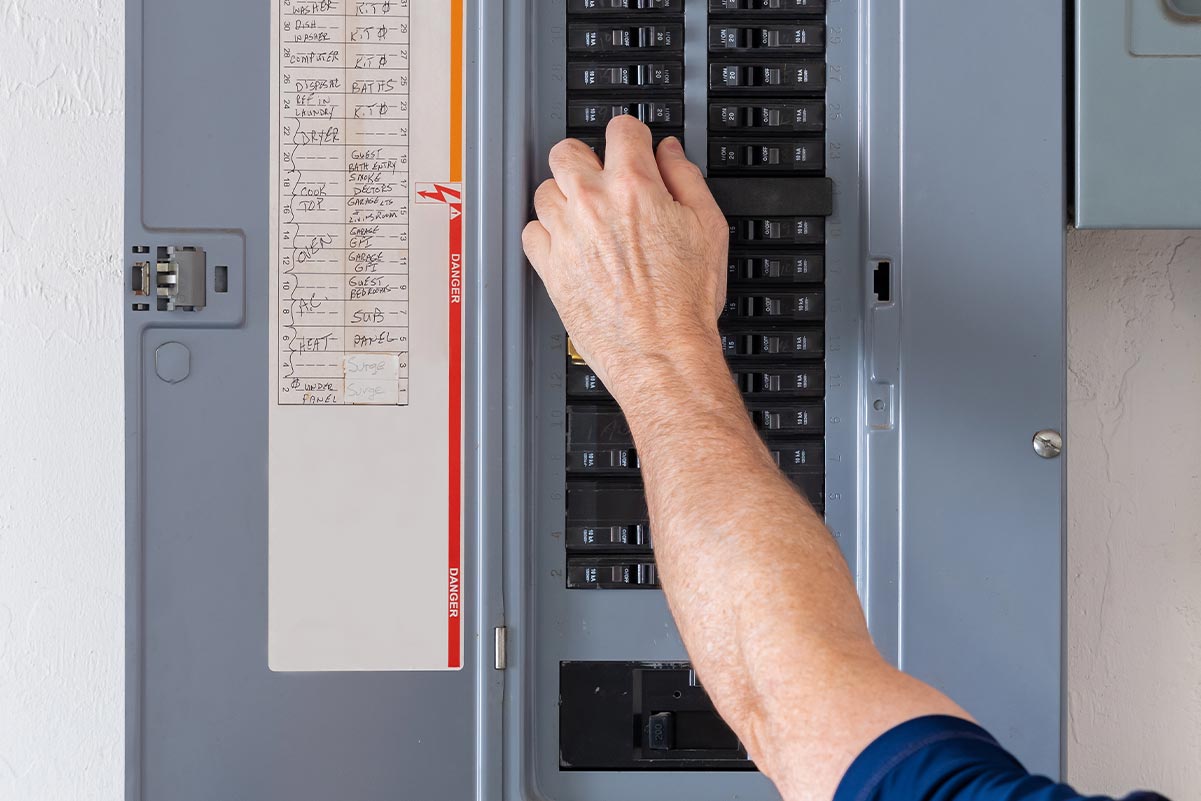
2. Disconnect the Power
A garbage disposal is a powerful appliance that commonly breaks and can be dangerous if not handled correctly. Before unclogging a garbage disposal, it is vital to ensure the power is disconnected.
If your garbage disposal acquires its power via an under-sink outlet, unplug it. If your garbage disposal does not plug into an outlet and is wired directly into your wall, you'll need to shut off the power from your breaker box.
To ensure you have turned off the correct breaker, attempt to turn on the garbage disposal. Begin work only when you are confident the power is off.
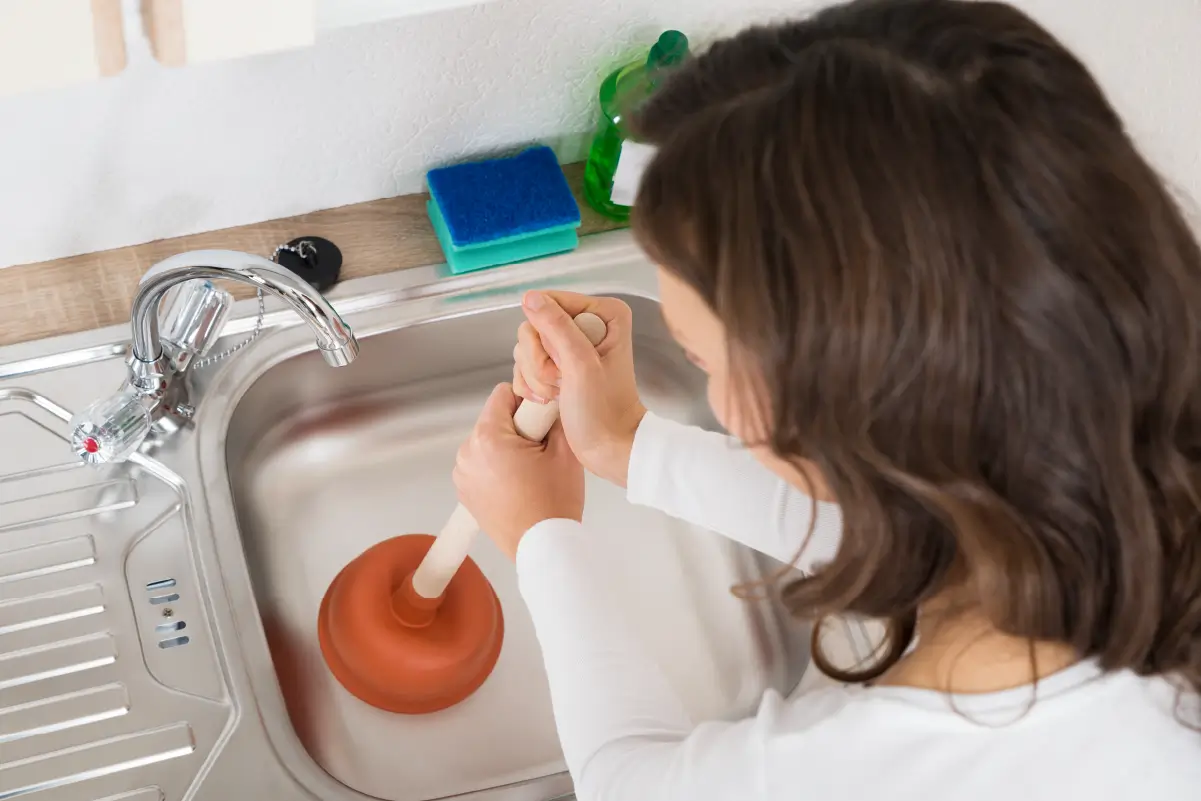
3. Drain Any Water
Before proceeding, you should know how to unclog a garbage disposal with a plunger, which will help eliminate standing water from your kitchen sink.
This is how to remove the water before proceeding with the rest of the DIY repair for a garbage disposal that’s not draining.
- Begin by removing your sink's stopper if there is one in place.
- Then, use a flat plunger to plunge the sink to clear the clog enough to allow water to drain.
- If plunging doesn’t solve the problem, you can bail the water out of the sink using a cup and/or a bucket.
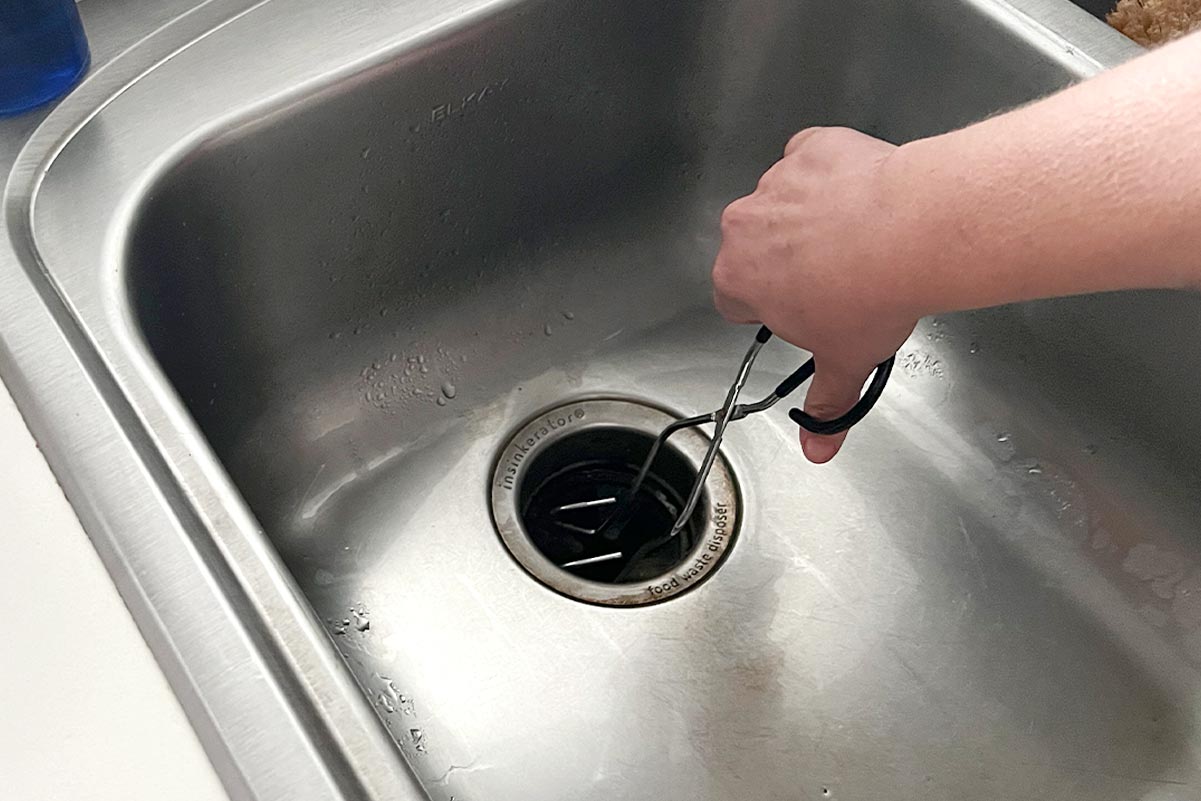
4. Remove Waste With Tongs or Pliers
Those wondering how to unclog a sink with a garbage disposal may be able to clear a clog with a pair of tongs or needle-nose pliers if the jammed items are visible.
After following the previous steps to disconnect the electrical supply and drain any water, insert your tool into the drain. Be sure not to press down on the clog when you attempt to clear it, as this may pack the lodged items tighter into the drain.
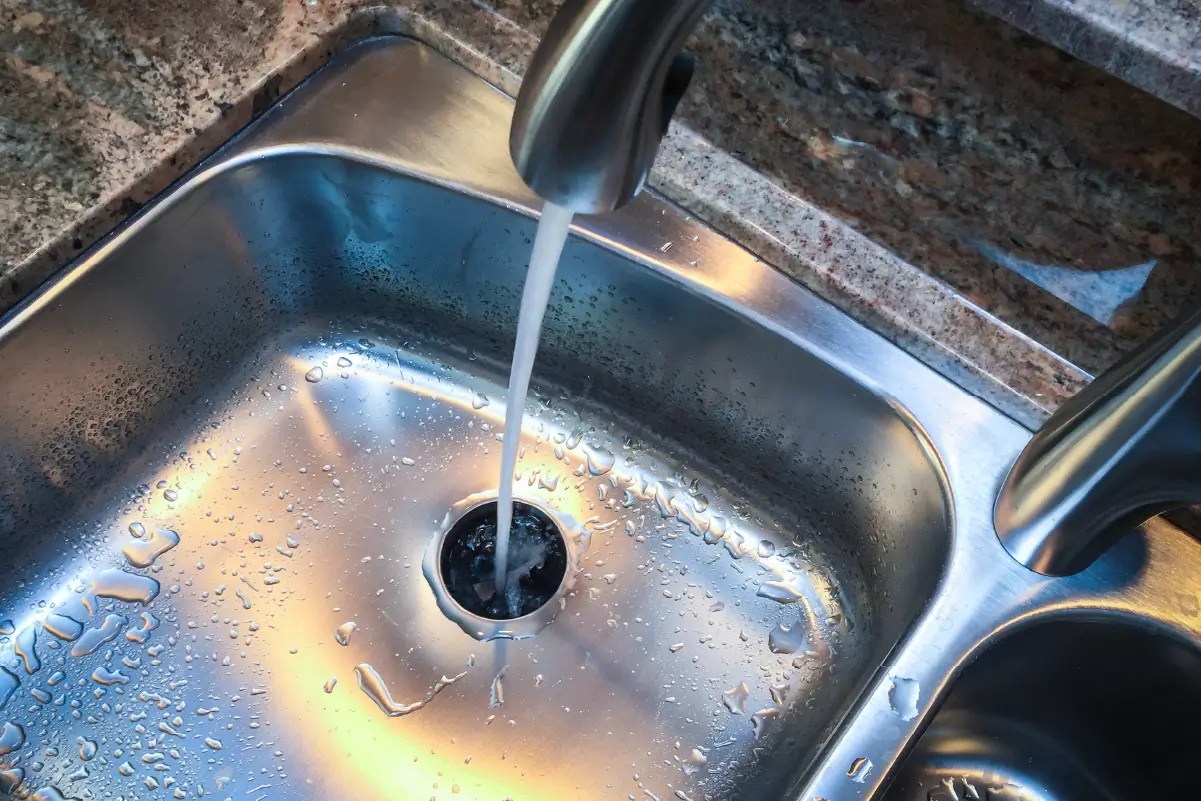
5. Turn the Disposal Impellers
If your garbage disposal refuses to operate, you may need to turn the disposal's impellers. The impellers are the blades that chop up your food; if they become jammed, you must manually turn them to clear the issue. If you previously turned your disposal's power on again, make sure power to the unit is turned OFF before continuing.
Note: Never stick your hand in the disposal to turn the blades.
Most disposals have a hole that enables you to turn the impellers manually using a hex or Allen key. Locate the proper hole using your garbage disposal model's user manual. Rotate the tool a few times to manually turn the blades. If you cannot turn the blades, contact a service professional.
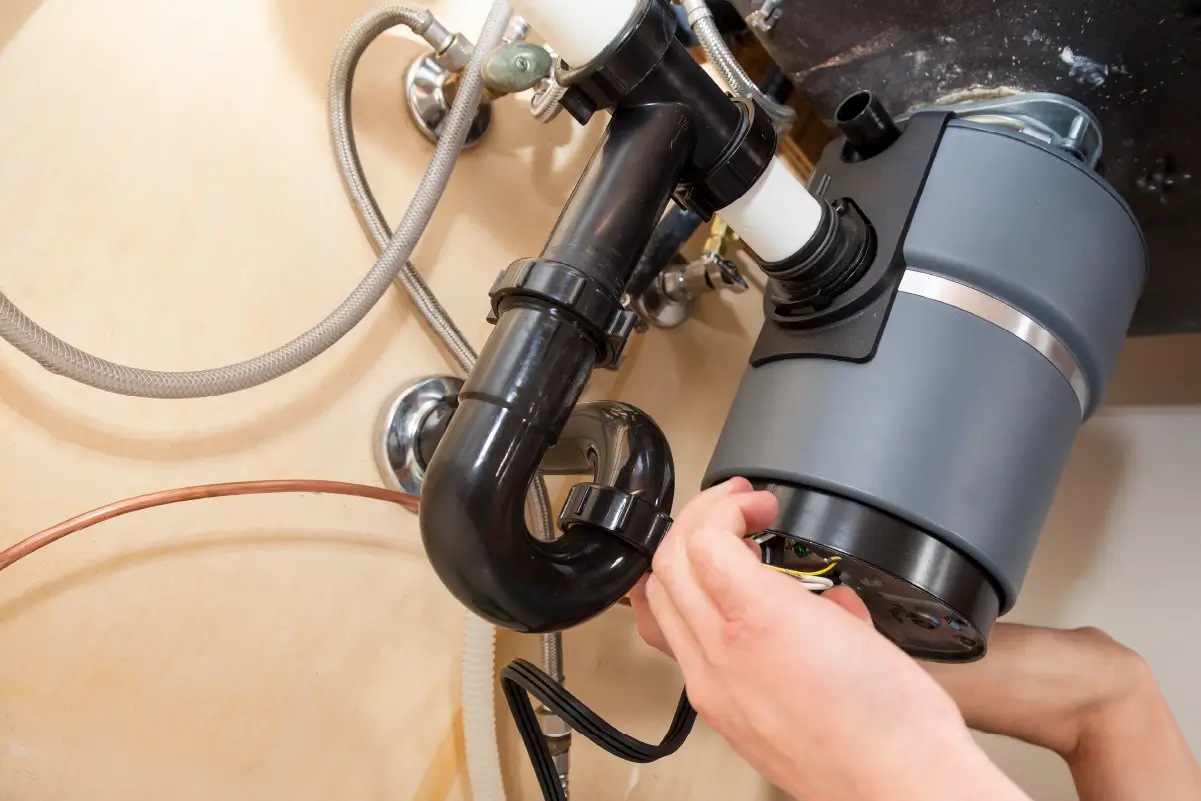
6. Check the Fittings
If your garbage disposal appears to be running correctly but still has a clog, the problem may simply be a clogged pipe. Check the sink's P- or S-shaped fitting just past the disposal discharge pipe and follow these instructions:
- After locating the P- or S-shaped fitting underneath your sink, place an empty bucket below the pipe to catch any excess water.
- If you tried to unclog the drain with a chemical earlier, put on a pair of Nitrile gloves to protect your hands and a pair of safety glasses in case the water splashes.
- Next, loosen the nut on the pipe using channel-type pliers.
- Check for debris buildup and clear it using a small brush.
- Assemble the pipe and test to see if the clog is resolved.
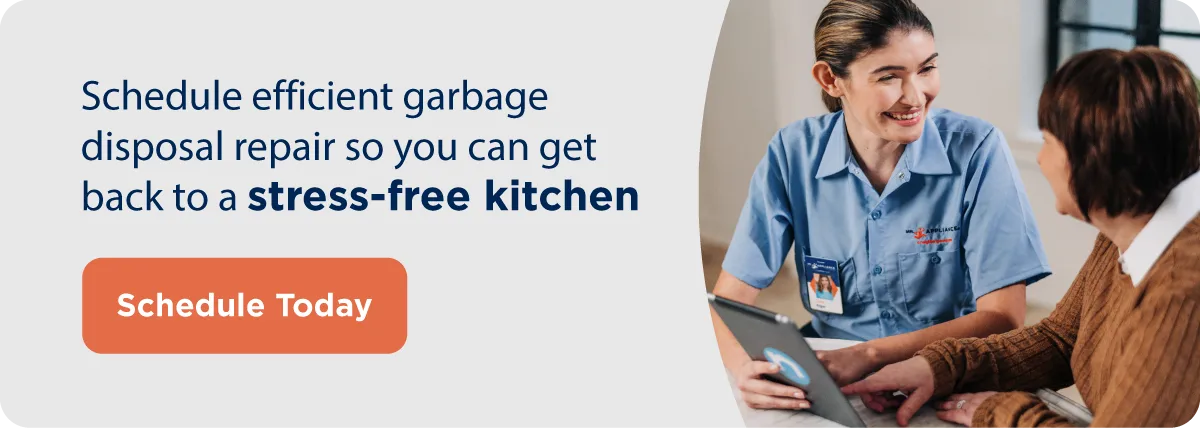
Schedule Garbage Disposal Maintenance With Your Local Mr. Appliance
Learning how to unclog a garbage disposal drain is a great way to get your kitchen appliance back up and running. But what if a DIY approach isn't enough and your disposal continues to give you issues?
Contact the service professionals from your local Mr. Appliance to assist. Keep all your appliances running smoothly with reliable service and maintenance backed by the Neighborly Done Right Promise™.
Schedule service with your local Mr. Appliance for garbage disposal repair or other home appliance maintenance needs.
This article is intended for general informational purposes only and may not be applicable to every situation. You are responsible for determining the proper course of action for your home and property. Mr. Appliance is not responsible for any damages that occur as a result of this blog content or your actions. For the most accurate guidance, contact the Mr. Appliance location nearest you for a comprehensive, on-site assessment.
Garbage Disposal Unclogging FAQ
Decades of experience, highly skilled service professionals, and a commitment to exceptional customer service have made Mr. Appliance a trusted leader in appliance maintenance and repairs. Our commitment to keeping your appliances up and running includes using our many years of experience and expertise to answer your appliance-related questions.
Here are answers to some of the most frequently asked questions about how to unclog a garbage disposal.
What Can I Use To Unclog My Garbage Disposal?
Once you turn your garbage disposal's power off, you can attempt to unclog it using a pair of tongs or needle-nose pliers. You can also utilize a commercial cleaning solution to break down any stuck food. Commercial solutions are available. Never stick your hand into a garbage disposal!
How Do You Unjam a Garbage Disposal?
To unjam a garbage disposal, disconnect the power before working on it, then remove any excess water from your kitchen sink. You can attempt to unjam your disposal using a pair of tongs – never your hands – or a cleaning solution. If jammed, your disposal may need to be reset or have the impellers manually rotated.
Why Is My Garbage Disposal Working but Not Draining?
There may be a clog if your garbage disposal is not properly draining. If you insert the wrong food, feed your disposal too quickly, or don't use enough cold water, it may develop a clog. You must unclog your garbage disposal to allow it to drain and continue regular operation.
Will Baking Soda and Vinegar Unclog a Garbage Disposal?
No, baking soda and vinegar will not unclog a garbage disposal. However, pouring a kettle of hot boiling water down your drain, followed by a cup of baking soda and a 2-cup solution of half water and vinegar will sanitize it.
Why Is My Garbage Disposal Humming but Not Turning?
The most common cause for a garbage disposal humming but not turning are jammed garbage disposal blades. Another common culprit is broken garbage disposal motors.
For the most efficient fixes and to gain clarity about your unique appliance situation, it’s always best to call a qualified service professional.
 Click to call
Click to call


